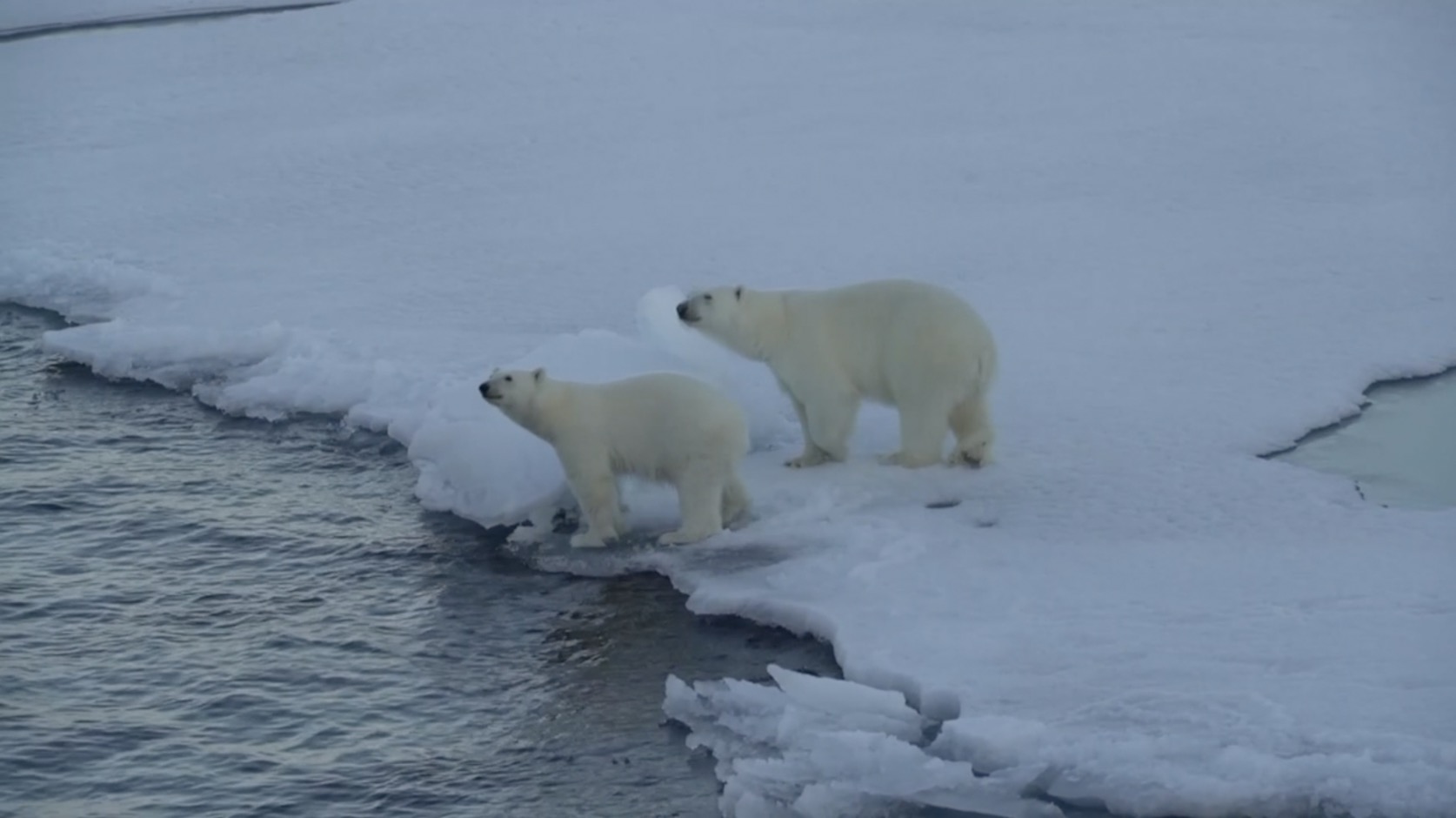
File GIF of when a polar bear encounters the Xuelong-2 icebreaker. /CMG
File GIF of when a polar bear encounters the Xuelong-2 icebreaker. /CMG
Editor's note: Chinese scientists have been on board the Xuelong-2 icebreaker since July 12 for the 13th Arctic Ocean scientific expedition. They are investigating the geology and geophysics of the mid-ocean ridge as well as key environmental factors related to atmosphere, maritime and climate change. The team is expected to return in September. Follow us for the latest stories from the expedition. You can find our previous piece here.
China's ongoing Arctic Ocean scientific expedition has just seen the conclusion of its first operation project, and the team members are continuing their scientific research at the Chukchi Sea.
Backing them is Xuelong-2, China's first domestically built icebreaker featuring bi-directional icebreaking technology.
Besides being a powerful "working partner," the icebreaker offers a cozy harbor for the expedition team who can face both physical and psychological challenges during the long marine journey.
Most of the crew share double rooms equipped with central air conditioning, independent bathroom and cabinets, with enough cleaning and storage space.
The vessel also provides leisure facilities for the members, such as a library and gym, and full-time team doctors are part of the expedition team, which can respond to medical service.
Four chefs with assistants

The crew members help out during meal preparations. /CMG
The crew members help out during meal preparations. /CMG
There are four chefs onboard to provide a balanced diet for over 100 members. Every day, three crew members also help out during meal preparations.

Food prepared for a meal. /CMG
Food prepared for a meal. /CMG

Fruits stored during the expedition. /CMG
Fruits stored during the expedition. /CMG

Vegetables stored during the expedition. /CMG
Vegetables stored during the expedition. /CMG
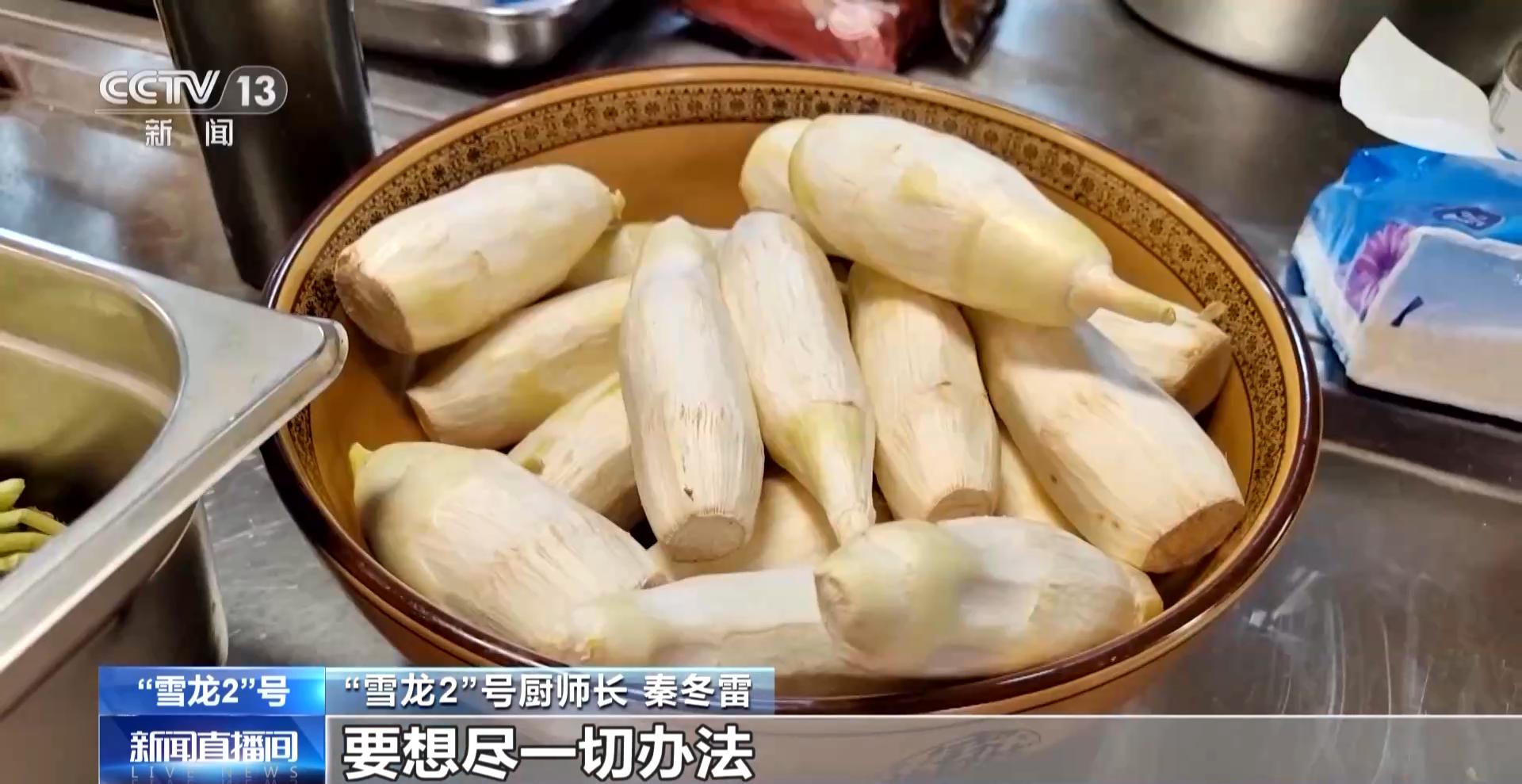
Vegetables stored during the expedition. /CMG
Vegetables stored during the expedition. /CMG

Vegetables stored during the expedition. /CMG
Vegetables stored during the expedition. /CMG
Ample food is preserved in cold storage areas separated for vegetables, eggs, fish and meat.
Qin Donglei, head chef of the expedition, told China Media Group (CMG) that he had prepared over 10,000 eggs for the team during the voyage that would last about 80 days to ensure a boiled egg for each person every day, with the remaining to be used in making dishes and cakes.
Qin said they have prepared about 20 to 30 kinds of vegetables, ranging from leafy greens to potatoes, tomatoes, carrots, onions and wax gourds, totaling about 3 tonnes.
They also have fruits with longer shelf life, such as apples, pears and oranges, besides watermelons and dragon fruits that are difficult to store and will be provided to the team members in the early stage.
Qin said the pressure comes in the later period when fresh vegetables are consumed up with only cabbages, potatoes and onions left, but they will by all means make some food materials, such as tofu and bean sprouts.
Garbage sorting
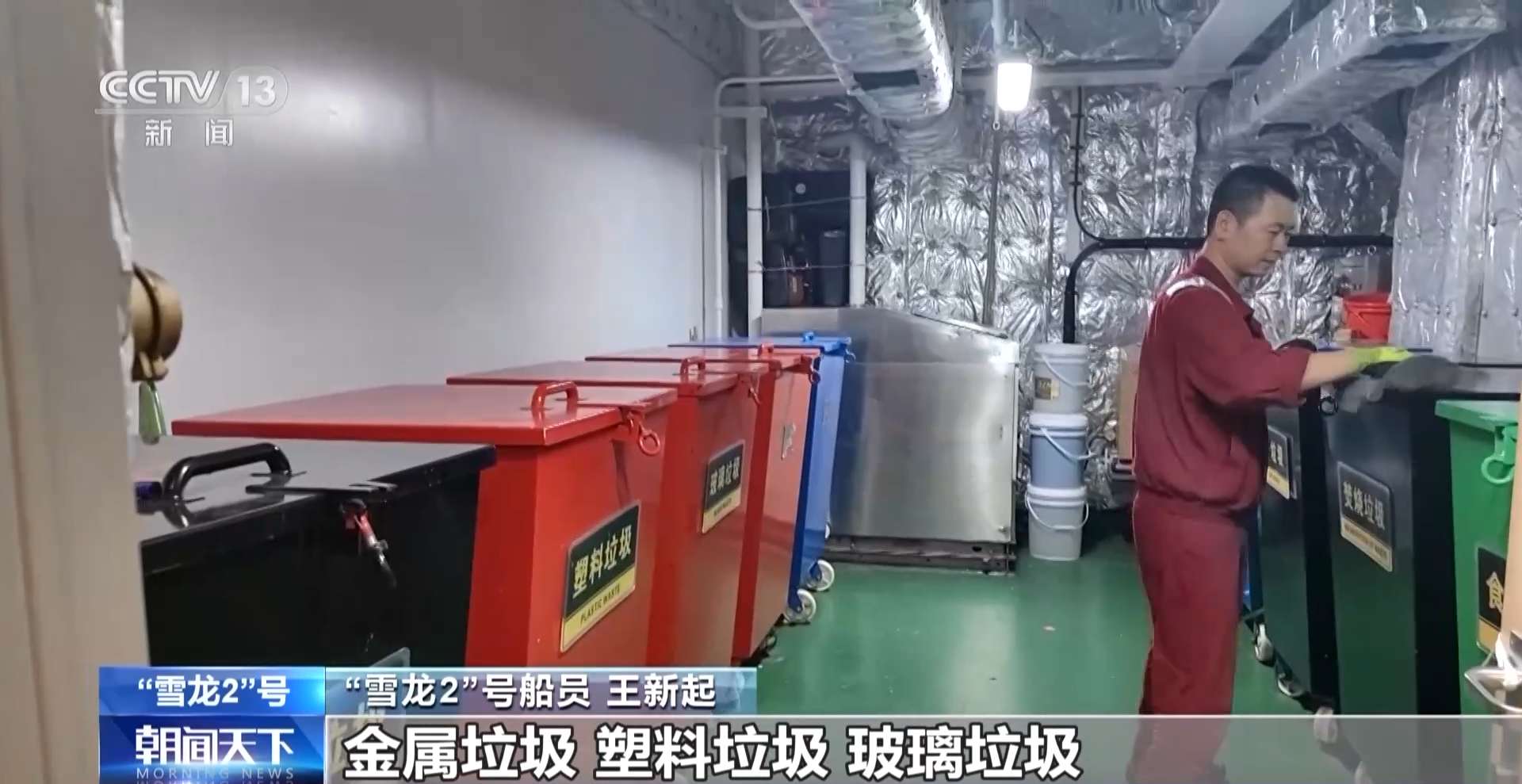
Classified garbage bins on Xuelong-2 icebreaker. /CMG
Classified garbage bins on Xuelong-2 icebreaker. /CMG
It is important to protect the environment while conducting scientific research. Therefore, they have classified garbage bins for metal, plastic and glass wastes, respectively, Xuelong-2 crew Wang Xinqi told CMG.
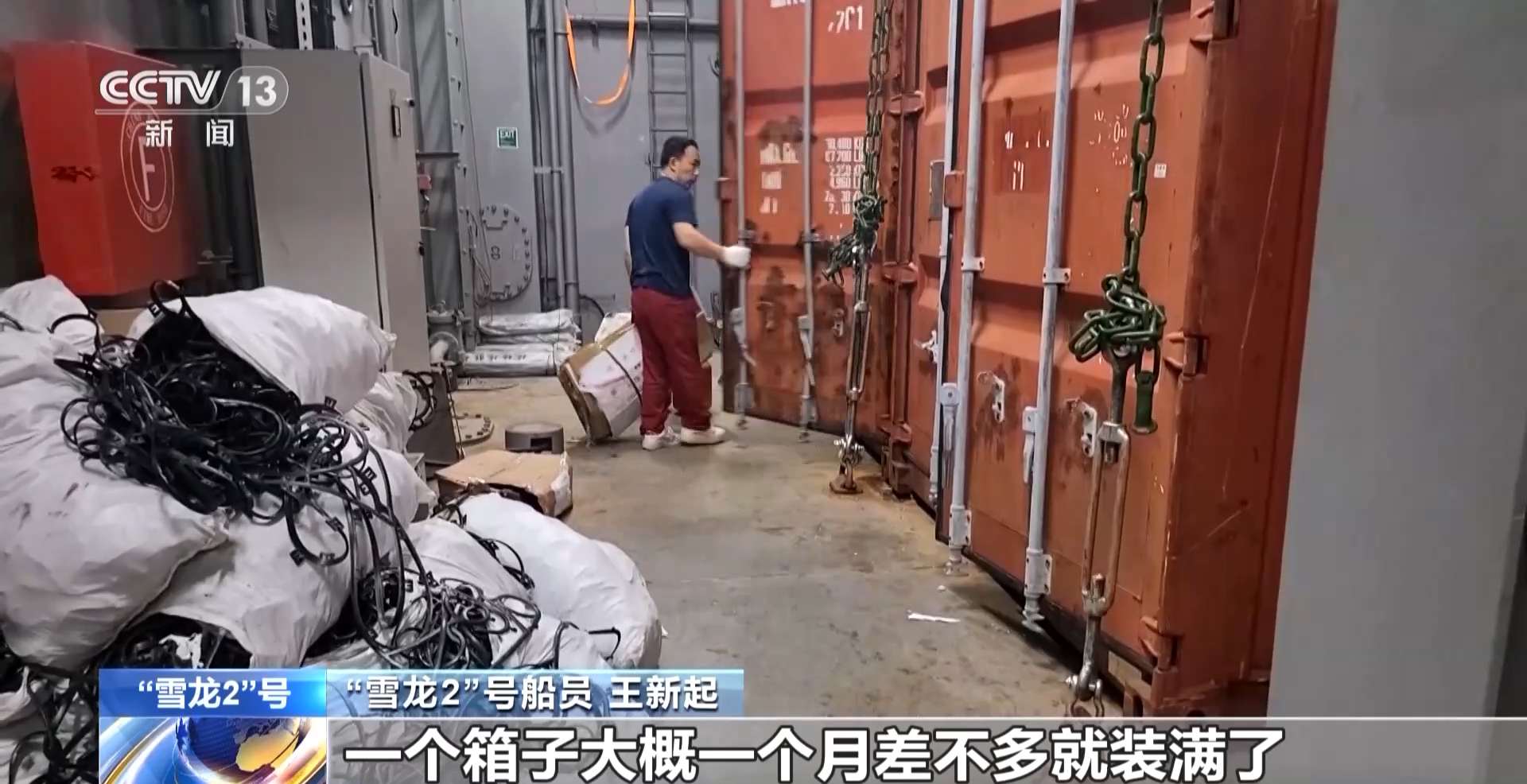
Recycled waste such as cardboard is packed and placed in the containers on Xuelong-2 icebreaker. /CMG
Recycled waste such as cardboard is packed and placed in the containers on Xuelong-2 icebreaker. /CMG
Recyclable waste, such as cardboard, should be packed and placed in containers that will be brought back home.
"There are three containers on the icebreaker for storing garbage, and one fills up in about one month," said Wang.

An incinerator room on the Xuelong-2 icebreaker. /CMG
An incinerator room on the Xuelong-2 icebreaker. /CMG
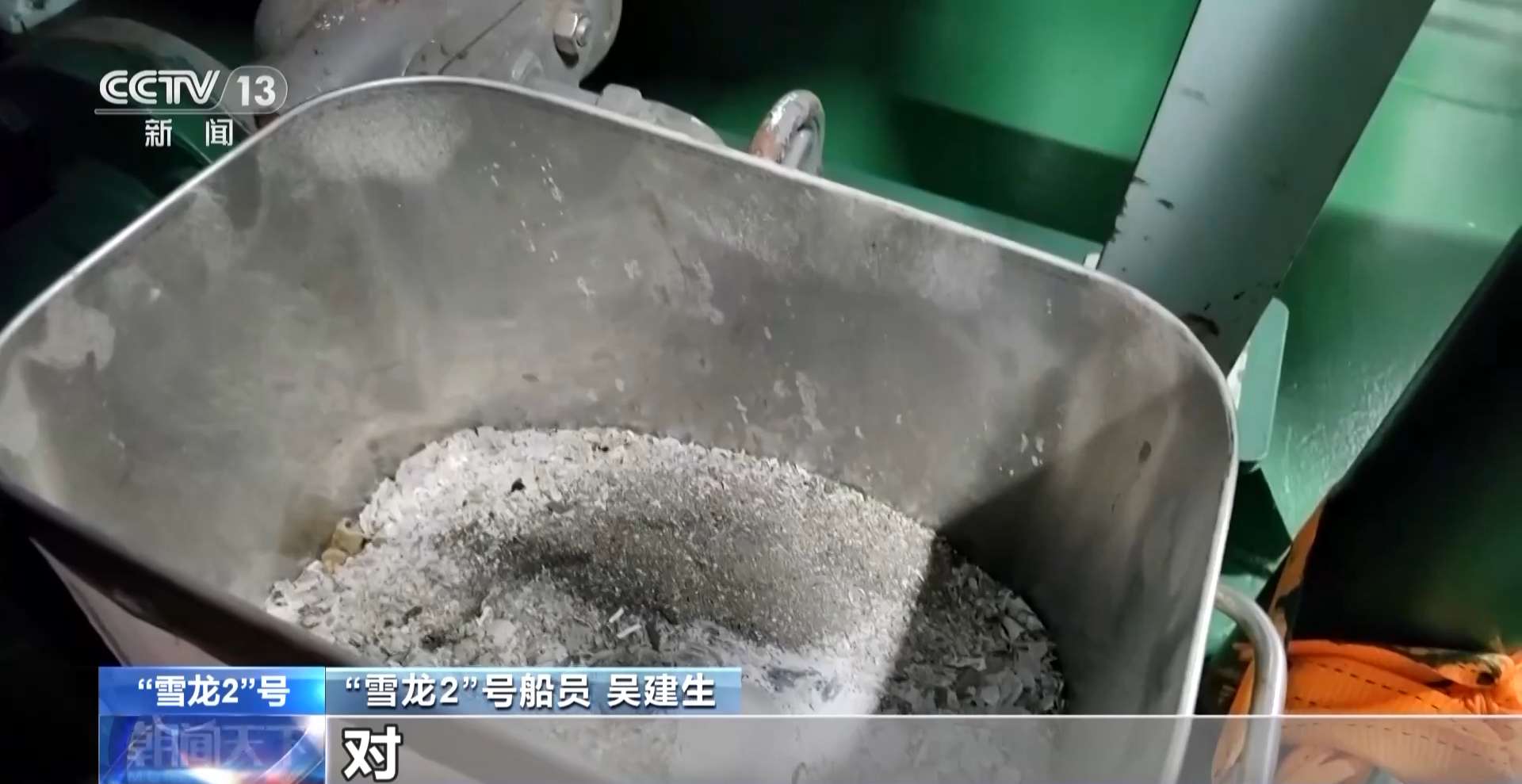
Ash from burnt garbage. /CMG
Ash from burnt garbage. /CMG
Opposite the garbage room, an incinerator room is set.
"Small pieces of cardboard can be burned and the ashes should be packed in bags and brought back home," said another crew Wu Jiansheng.
There are strict rules about what can be disposed and what can be brought back, Wu added.
Fresh water demand

A water dispenser on Xuelong-2 icebreaker. /CMG
A water dispenser on Xuelong-2 icebreaker. /CMG
Fresh water is a very precious resource for the crew in such a long voyage, and thanks to special equipment, they don't need to bother.
The crew have three water dispensers on different floors which can provide purified water and hot water. Inside the rooms, they also have direct drinking water faucets.
The kitchen and direct drinking will every day consume about 2 tonnes of stored fresh water which is processed by ultraviolet-light disinfection and mineralized filtration.
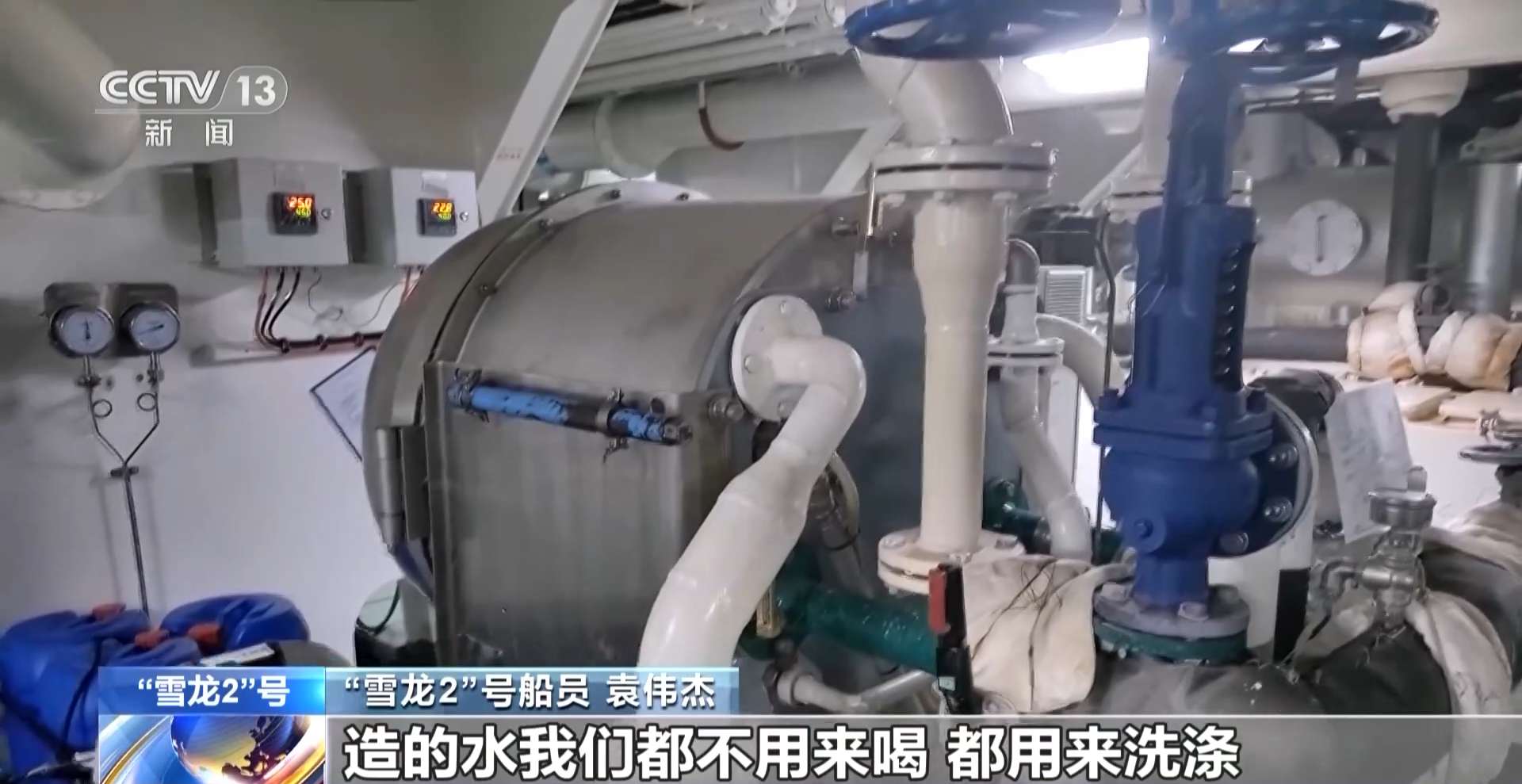
The fresh water generator on Xuelong-2 icebreaker. /CMG
The fresh water generator on Xuelong-2 icebreaker. /CMG
For other usages like laundry and bathing, the crew members utilize a fresh water generator, which can produce about 20 tonnes of water per day by evaporating seawater.
Bonus!
The trawling work, so-called "unmasking the blind box," is always regarded as the most fun part during an expedition.
It refers to lowering a net into the sea and dragging it for a period of time to see what you can get.
The operation can be used to analyze biodiversity in the sea.
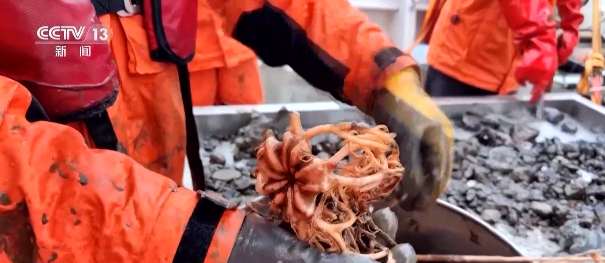
Gorgonocephalus arcticus, also referred to as Northern basket star. /CMG
Gorgonocephalus arcticus, also referred to as Northern basket star. /CMG
The team also observed the first polar bear during the voyage at about 8 p.m. Beijing time on July 31.
00:18
